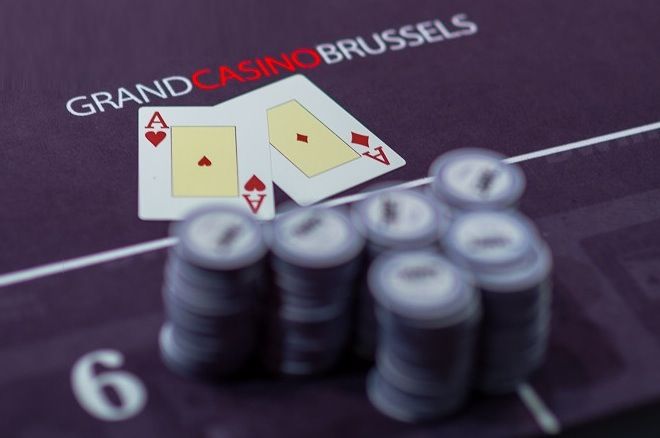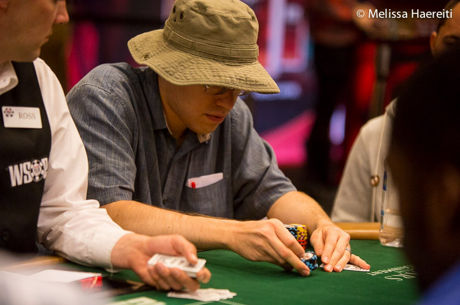Everybody Folds When You Finally Have a Big Hand? Here’s How to Fix It

I heard it again just last week, from the tightest guy at my tournament table.
“It figures,” he said. “I finally pick up a hand, and everybody folds.” He flashed his aces before returning them to the dealer.
If you’ve never said or thought words along these lines, if you don’t have a problem getting action on your big starting hands, then there’s no need for you to read this article. Go on to the next one. But if those words have ever come out of your mouth, or at least passed through your mind, keep reading.
It’s easy to diagnose the root of the problem of never or rarely getting action on the preflop raises you make when holding premium hole cards: You’re either raising too much, too infrequently, or both.
Problem #1: Raising Too Much
Let’s start with the first possible cause — raising too much.
For a given set of blinds, and a given set of opponents, there is a range of preflop raises that will, on average, get called by a desirable number of players — say, between two and four. Set the price lower than that, and you’ve got a family pot. Set the price higher than that, and the last player to fold will toss you the blinds while mockingly saying, “Don’t spend it all in one place.”
Some players raise more with their premium hands than with others. For some of these people, it’s because they think they should charge the other players as much as possible to get a chance at cracking aces or kings. For others, it’s because they recognize that postflop play gets more difficult when more people are involved, and they’re not comfortable carrying their one big pair through four rounds of betting against more than one opponent.
It’s a mistake, however, to vary the size of your opening raise according to the strength of your cards. It’s called a bet-sizing tell, and it’s a huge leak of information to anybody paying attention.
Your general strategy should be either to make the same opening raise every time, or to use some sort of rough formula to determine the size of the raise — that is, one that does not take any account of your hand strength. Many players, for example, calculate a raise amount by adding X for each opponent who has folded, and Y for each one that has limped in.
Such formulas have the considerable advantages of automatically making raises larger (1) when the pot is larger, and (2) when you’re in later position. Whether fixed or formulaic, though, your raise size should take no consideration of whether you’re making it with AxAx, with JxJx, or with 6x3x-offsuit.
Problem #2: Raising Too Infrequently
Once you’ve licked the problem of making your raises too big for anybody to call, you have to tackle the problem of raising too rarely for anybody to call.
It takes no particular poker prowess to guess that the guy who’s raising only once an hour is probably doing it with aces or kings. He might as well show them before putting in that raise instead of on their way back to the dealer as he rakes in his pathetic little pot.
You need to be raising with enough of a range of hands that the other players can’t correctly jump to the conclusion that you have yet another big pocket pair. You’ve probably seen professional players like Gus Hansen, Faraz Jaka, and Gavin Smith in televised hands getting their big pairs called down for big pots by competent opponents with surprisingly weak hands. Why? Because those opponents know that such loose players are raising and betting with complete air more often than not. Playing such an extreme loose-aggressive game is like juggling chainsaws: It can be done by highly skilled and experienced people, but it’s extremely dangerous.
I’m not arguing for expanding your ultra-tight raising range to “any two cards.” I’m just urging you to expand it modestly. I won’t give you a specific range — first, because it depends heavily on your position, your table image, and your mix of opponents, and second, because you can find tables of suggested raising ranges in any introductory poker book.
But I will give you two thoughts to chew on regarding opening ranges:
- Any hand that feels like a good one with which to be the third or fourth limper is a good one to raise with instead.
- If you’re not at least occasionally being caught having raised with hands like 6x3x-offsuit, you’re doing it wrong.
Note that your raising range has to expand in every position. If you expand it appropriately on the button, but still raise from under the gun only with aces, kings, or queens, you are right back to playing so transparently that you won’t get the kind of action that makes having such big pairs profitable.
And the same has to be true of your reraises. If you submit three-bets only with your very strongest hands, even the densest opponents will quickly figure that out, and not hang around to put more money into the pot that you have the best chance of winning.
Final Thoughts
Your ultimate goal is for opponents who have played with you a long time still to be unable to guess what your hole cards are from the fact that you have raised or reraised in a particular situation. When they are reduced to guessing, they will inevitably make mistakes — and their mistakes are your profits.
If you’re still reading this far, it’s presumably because you have the problem of not getting action on your best starting hands. And that, in turn, is because you’re making it too easy for your opponents to play correctly against you. The problem is not them — it’s you. So go fix it.
Robert Woolley lives in Asheville, NC. He spent several years in Las Vegas and chronicled his life in poker on the “Poker Grump” blog.
Want to stay atop all the latest in the poker world? If so, make sure to get PokerNews updates on your social media outlets. Follow us on Twitter and find us on both Facebook and Google+!









